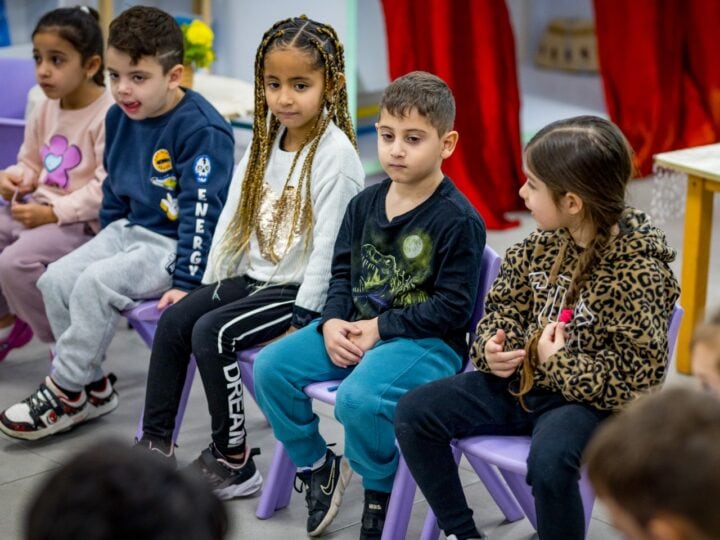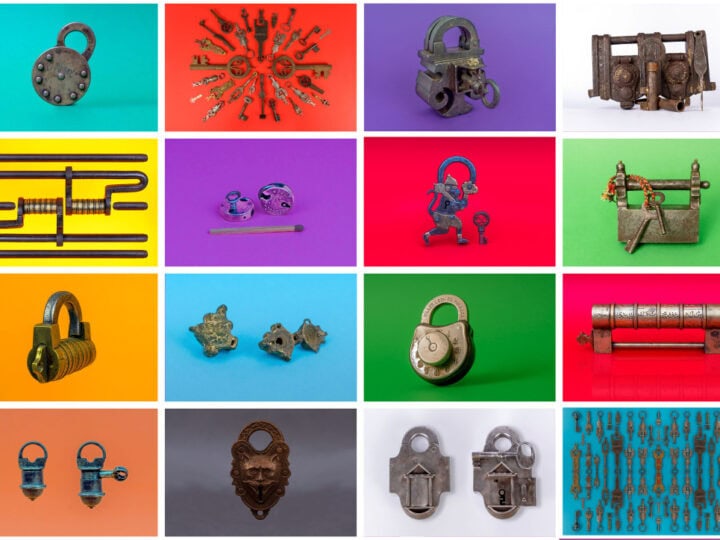A new display at Ben-Gurion International Airport reminds anyone leaving or entering Israel that more than 130 people remain in captivity in Gaza since October 7.
Eight hundred “freedom tags” hanging against a glass wall are imprinted on the top half with “Halev shelanu shavui b’Aza” (“Our heart is captive in Gaza”). The lower half says “Bring them home – now!”
Tamir Raicher, 48, the prop-tech executive behind this idea, said he struggled to express in a few words “the whole range of abductees: toddlers, babies and children, women and men, young and grandparents and, of course, soldiers.
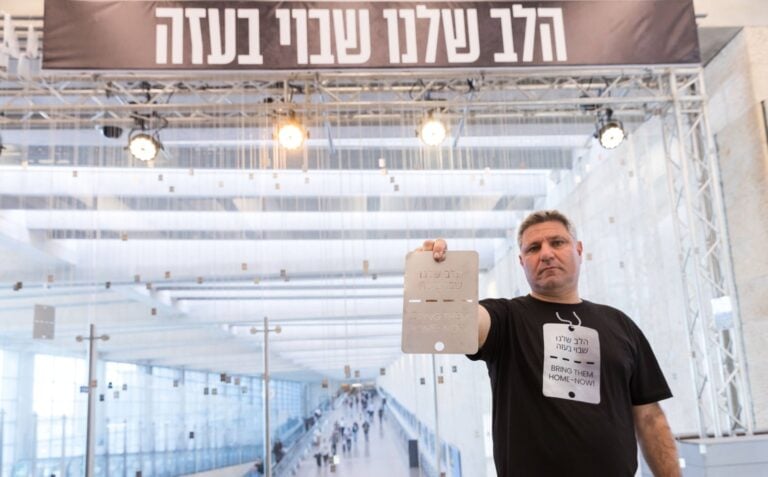
“What they all have in common is that until the abductees all return home, the heart of the families and the relatives remains captive in Gaza — theirs and ours as a country.”
There are hostages
On October 6, Raicher moved to a new house in Hod Hasharon, north of Tel Aviv.
“I woke up at 6:30 the next morning to sirens and I thought it was a mistake,” he tells ISRAEL21c.
Within the hour, he realized that something terrible was happening in the Gaza border communities.
Raicher messaged people with whom he had been protesting Israel’s proposed judicial overhaul, urging them to join him in organizing rescues or evacuations in the affected areas.
He and his brother-in-law Ami Daniel, CEO of maritime intelligence company Windward, set up a “war room” – a kind of operational headquarters – in Raicher’s new living room.
“Within an hour and a half, my phone was swamped with calls,” says Raicher.
In the afternoon, he got a message from the family of a young woman who’d attended the Supernova music party in Re’im, which would soon be infamous as the site of many Hamas killings, kidnappings and atrocities that morning.
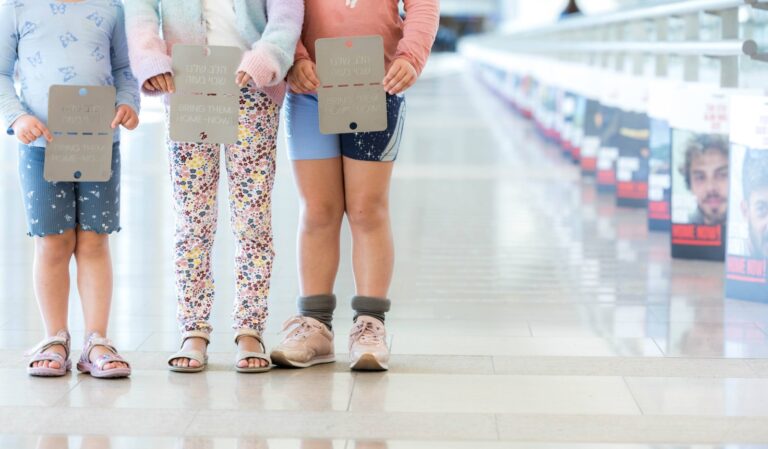
“They sent me her location from her phone and I could see it was Gaza. At that time, nobody knew there were hundreds of hostages taken. I thought I wasn’t reading the map right,” says Raicher, “and then more and more messages came in.”
Nearly a million tags
Raicher moved the war room to the Expo Tel Aviv international convention center. Hundreds of volunteers came to see how they could help civilians and troops. Donations of money and equipment poured in.
Concerned about plight of the hostages, Raicher decided to make dog tags to raise awareness “and connect people emotionally to make a commitment to the people and their families.”
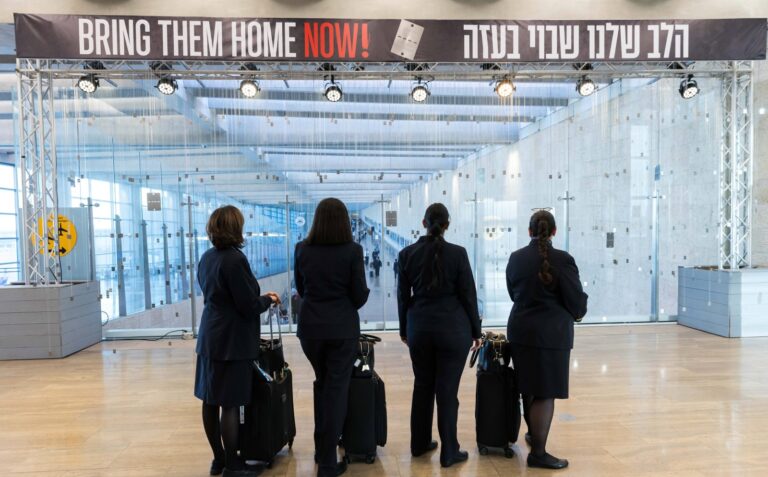
He started by commissioning local workshops to make 3,000 tags to distribute to politicians and world leaders.
“The first bunch we sent was the day [US President] Biden came to Israel. Though we didn’t manage to get one to him, we got them to a lot of leaders.”
The White House spokesperson, the US Secretary of Defense, the Pope, Elon Musk, Sergey Brin and Noa Tishby were among those seen wearing the necklaces.
@noatishby I recently went on Good Day New York with #RosannaScotto ♬ original sound – Noa Tishby
The idea caught on. Pretty soon, every factory in Israel that could do this type of work was turning out the tags and Raicher imported more.
“At this point we’ve made close to a million of them,” he says.
About 22 million shekels has been raised from the sales. All net proceeds go to the Hostages and Missing Families Forum. Click here for purchase information.
Airport display
When Raicher got the idea to display the tags at Ben-Gurion International Airport, “the main gateway of the state of Israel,” he approached the airport’s management and got their promise of personnel and space. Many volunteered their time.
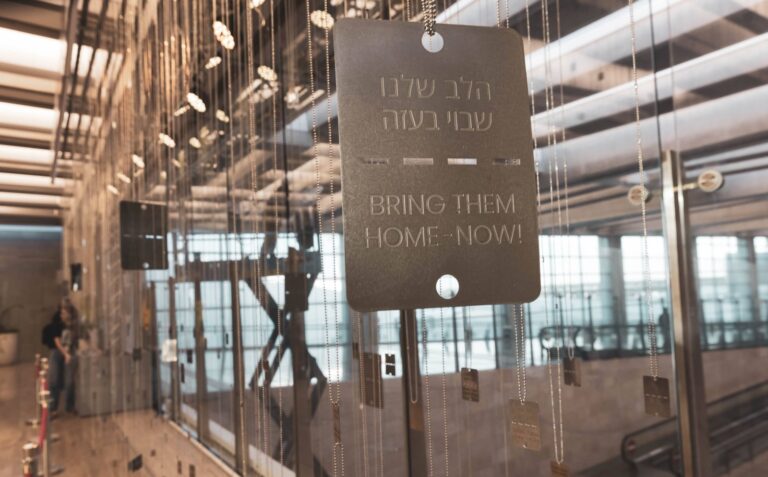
On January 7, the display was up: a unique 3D metal tag “curtain” hanging across a large transparent glass wall.
Approximately 800 tags of different sizes hang at a different lengths and at different angles to catch the light.
“It’s the first thing people will see when landing in Israel and the very last thing they will see as they fly out,” Raicher says.















